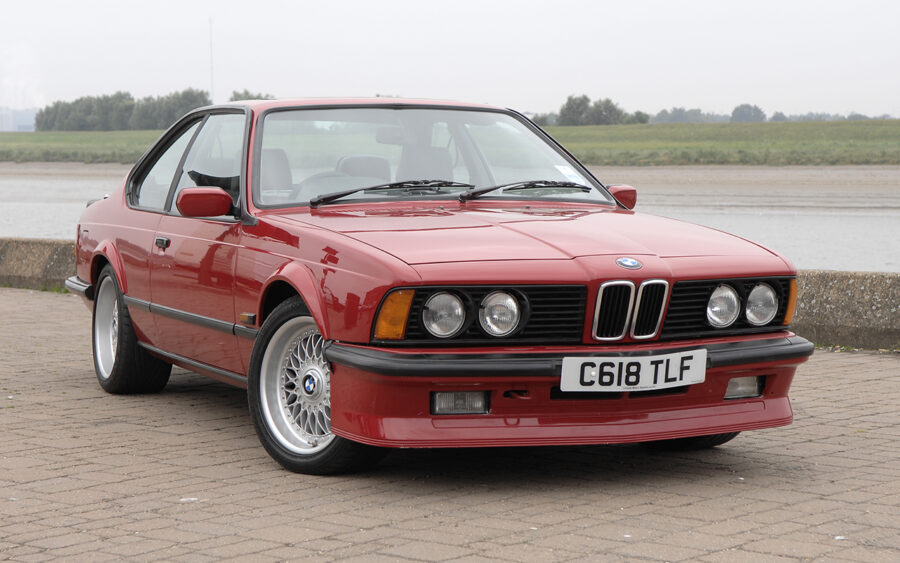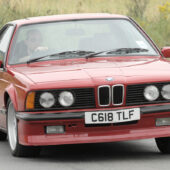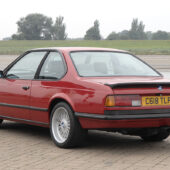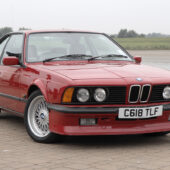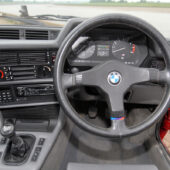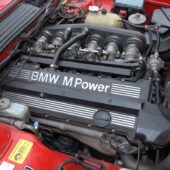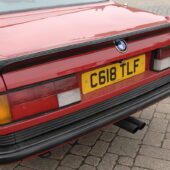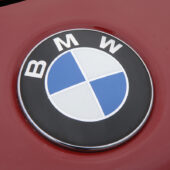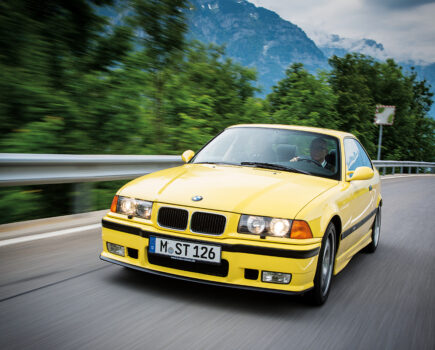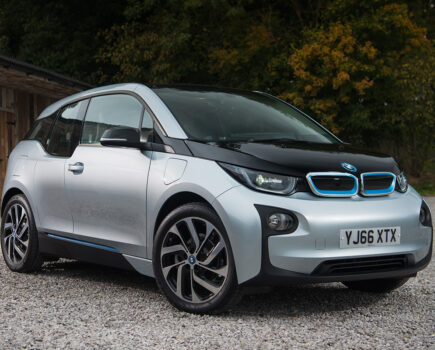With the longest production run of any BMW, the E24 6 Series sits at an intersect between desirability and affordability. Here’s how to buy
Words: Simon Jackson
The E24 6 Series has undoubtedly become one of the most desirable classic BMWs over recent years, and more often than not it’s the range-topping versions attracting the most attention – perhaps for obvious reasons. Designed by BMW but built by Karmann, the E24 followed in the footsteps of its illustrious relation, the E9 coupé. It launched in 633CSi form in the UK during 1976 and two years later the 635CSi arrived.
Power came from the 3.2-litre version of the M30 straight-six developing 218hp at 5200rpm and 229lb ft of torque at 4000rpm. That was enough for it to record a 0-62mph time of 7.6-seconds (five-speed manual), the automatic version managing to protract the same drag race out to 9.1-seconds. Note that there are rare later cars with dog-leg five-speed manuals. In 1982 came changes, chief among them underpinnings from the E28 5 Series to move the game along, and the 3430cc Digital Motor Electronics (DME) version of the M30 engine, in too came revised styling both inside and out.
The following year saw the introduction of the ZF four-speed automatic gearbox, the ZF 4HP-22 switchable ‘box employed from 1984 onwards. Towards the latter half of the decade US market-spec impact bumpers were adopted (1987) and for the 1988 MY the 220hp E32 735i engine. These later ‘Highline’ cars gained air-conditioning and electric seats as standard, in the UK the Highline Motorsport Edition added to this recipe with shadow line exterior trim and M embossed seats.
Production ceased in 1989 – the culmination of a staggering 13-year run resulting in over 85,000 examples being produced. In terms of choosing which version to opt for today, the later cars are the least likely to cause grief. More refined in some regards, these 1982-1987 examples are arguably easier to come by in good condition, too. As you’ll read further into this feature rust is a major enemy of the E24 6 Series, making purchasing from a respected marque specialist an especially wise move. More than virtually any other BMW, E24s needs very careful examination for signs of corrosion prior to purchase.
Bodywork
Rust is the main issue here; almost all E24 6 Series will have seen remedial treatment for the problem during their lifetime. While the front wings are a particular well recorded issue area both inside and out (the bracket on the inner wing is nearly always the cause, but wings also rust on their top edges), the rest of the car is far from immune. New replacement wings are pricey (£1300 a pair) and available only from BMW direct, so salvaging the originals therefore is preferable.
Note that cars built in Spring 1982 onwards (those with the wrap-around rear bumper) have different front wings and doors, together with wider arches. Rotten sills are not uncommon; check the rear axle mounting points and the rear arches as these suffer too. Chrome bumpers are actually steel with chrome covers; new ones are expensive so these want to be in good order ideally.
Structurally, E28-based cars can suffer the failure of their mounting brackets on the front crossmember – watch for this.

Engine and transmission
The M30 is a fantastic engine, one for the history books. The post-1982 635CSi received the engine in arguably its best state of tune with the 3430cc unit, early cars used the 3453cc short stroke motor with a Motronic engine management system. Later Highline versions got an engine that combined the crank, rods, pistons, cylinder head and Motronic from the E34 535i, mated to the old E28 block.
Two main issues should be on your radar; overheating and cam wear. The former will be down to poor maintenance of the engine’s cooling system (the viscous fan can play up), and without regular anti-freeze changes (every two years) the alloy head can corrode the engine’s waterways leading to head gasket failure. A blocked oil spray bar, or either or both of the two banjo bolts on the engine coming loose, will be the cause of cam wear.
If your prospective purchase has a noisy cam be aware that you could be staring at a bill for £2500 to remove the head and replace the cam. Many owners faced with this procedure opt to fit aftermarket cams, such as those available from Schrick or Cat Cams, at this point. Seasoned E24 owners say that a spare DME relay should be carried onboard at all times – it feeds the fuel pump and the ECU and is prone to failure.
A manual-transmission 635CSi is a somewhat rare beast. Of the automatics there was the 3HP22 three-speed ‘box (offered until late‘82), and the 4HP22 four-speed version– from late 1983 came the EH electronic control. Neither three- or four-speed automatic gearboxes are pleasant to use nor without weakness, making the rare manual the better option.
Cars built before 1986 got a Getrag 265/6 overdrive gearbox, while the optional (dog-leg) 265/5 Sport was available until 1987. Between 1982 and 1985 the Getrag 260 manual gearbox was used on overdrive cars. Mechanisms are often tired on the Sport gearboxes, making an overdrive option a good one.
In terms of differentials, pre-1982 cars had the E9-style ‘sideloader’ affair; diffs, propshafts and driveshafts are all robust, but watch for those cars that have not yet had their prop centre bearing and doughnut replaced, as age is not on your side.
Steering, suspension and brakes
Cars built before May 1982 got the suspension and steering from the E12 5 Series, while cars built afterwards got the E28 setup. Check the strut cups front and rear are not rotten (new ones are approximately £500 each up front); while you’re there, check the front chassis legs – these and the steel front bumper shells on pre-1988 cars are prone to rot.
A wobble through the steering wheel at around 55mph might not simply be unbalanced tyres or sticking front brake callipers, rather the upper and lower front control arms (and bushes) and steering linkages are likely worn. Note that new arms made by Febi or Lemforder come complete with new bushes – these are identical to the E28 5 Series items. The final cause of vague steering from up front could be a worn steering box. Any further handling outside of the norm could be tired rear axle beam bushes.
Brakes are an issue across the board. E12-based cars featured twin servo brakes – the servo seals fail, leaking fluid into the bellows. Replacements are unavailable so the only option is to fit something from a different car. Later E28-based cars got a hydraulic booster system whereby the brakes are assisted by hydraulic pressure from the power steering pump. A soft or rock-hard pedal, or sticking brakes, are common. In cars with ABS an illuminated light over 55mph could be rusted trigger rings on the rear drive flanges.
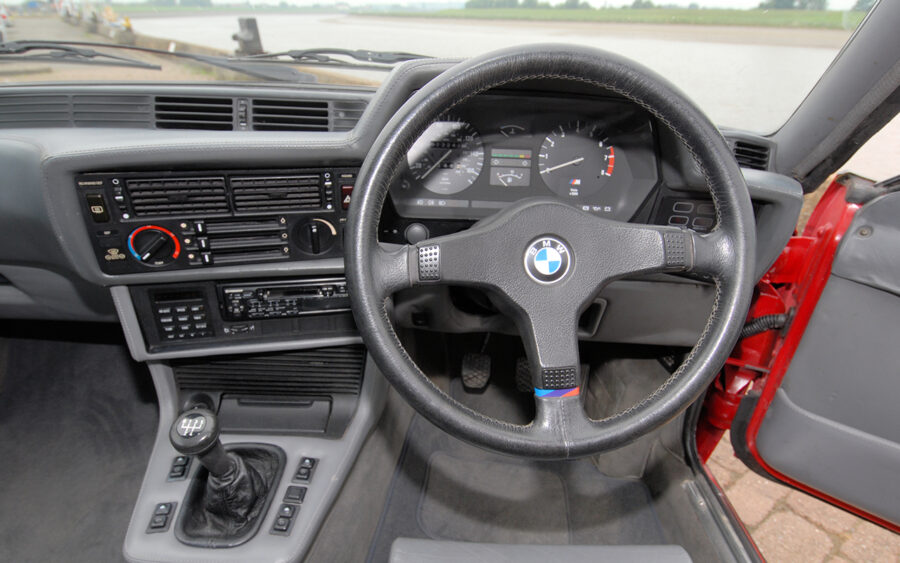
Interior and trim
There are three seat styles here: standard, BMW Sports and Recaro. With their enlarged bolsters the Recaros are the most desirable option; leather, cloth or velour was offered.
A few key parts in the cabin are shared with the E28 5 Series – the on-board computer and steering wheel being cases in point. The former can fail due to leaking batteries; buying a brand new replacement from BMW is cost-prohibitive, so a second-hand E28 item is a good fix (and fit). Likewise a 5 Series steering wheel is a good way of replacing your E24’s tired item – they’re identical.
Finally, and rather worryingly, the hazard light button can short-out and melt – these are shared with the E21 3 Series, so keep that in mind when searching for are placement part.
BMW E24 6 Series: our verdict
Good E24 6 Series are becoming increasingly difficult to find these days. The best route to E24 ownership is to purchase a low-mileage example with a solid history – an option that’s expensive but ensures a level of peace of mind. Cheaper, higher-mileage cars with little rust make for good projects, but it’s almost always better value to stump up for a good car in the first place.
As a handsome alternative to cars like the Jaguar XJS and Porsche 928, the E24 6 Series makes a lot of sense. Go for the desirable M635CSi and you’re likely to have an appreciating asset on your hands.

